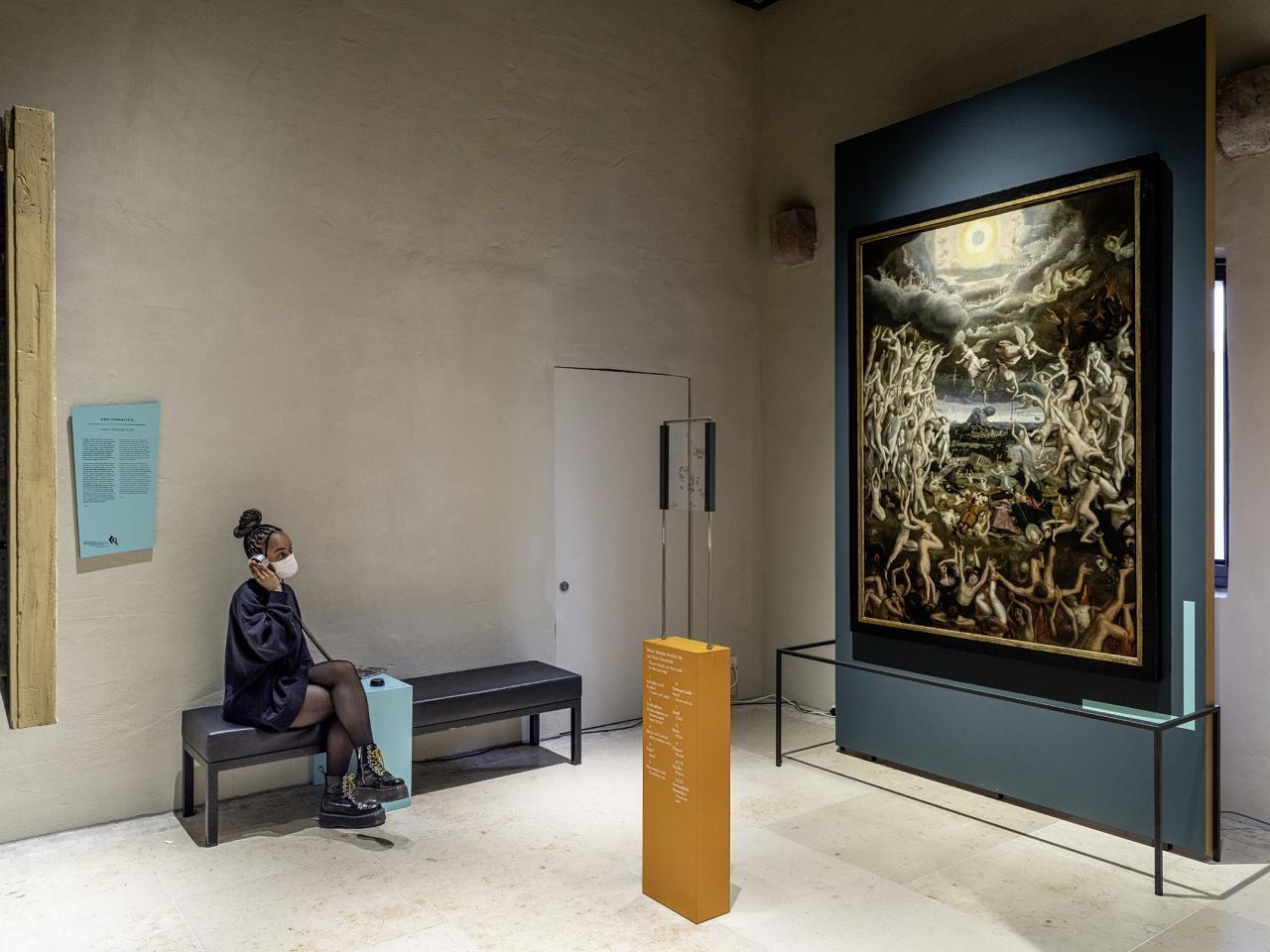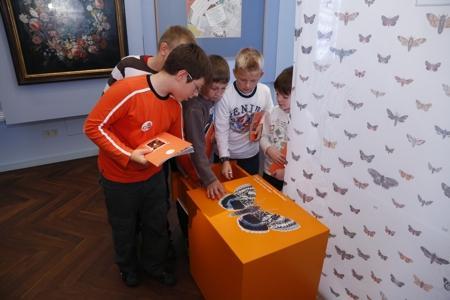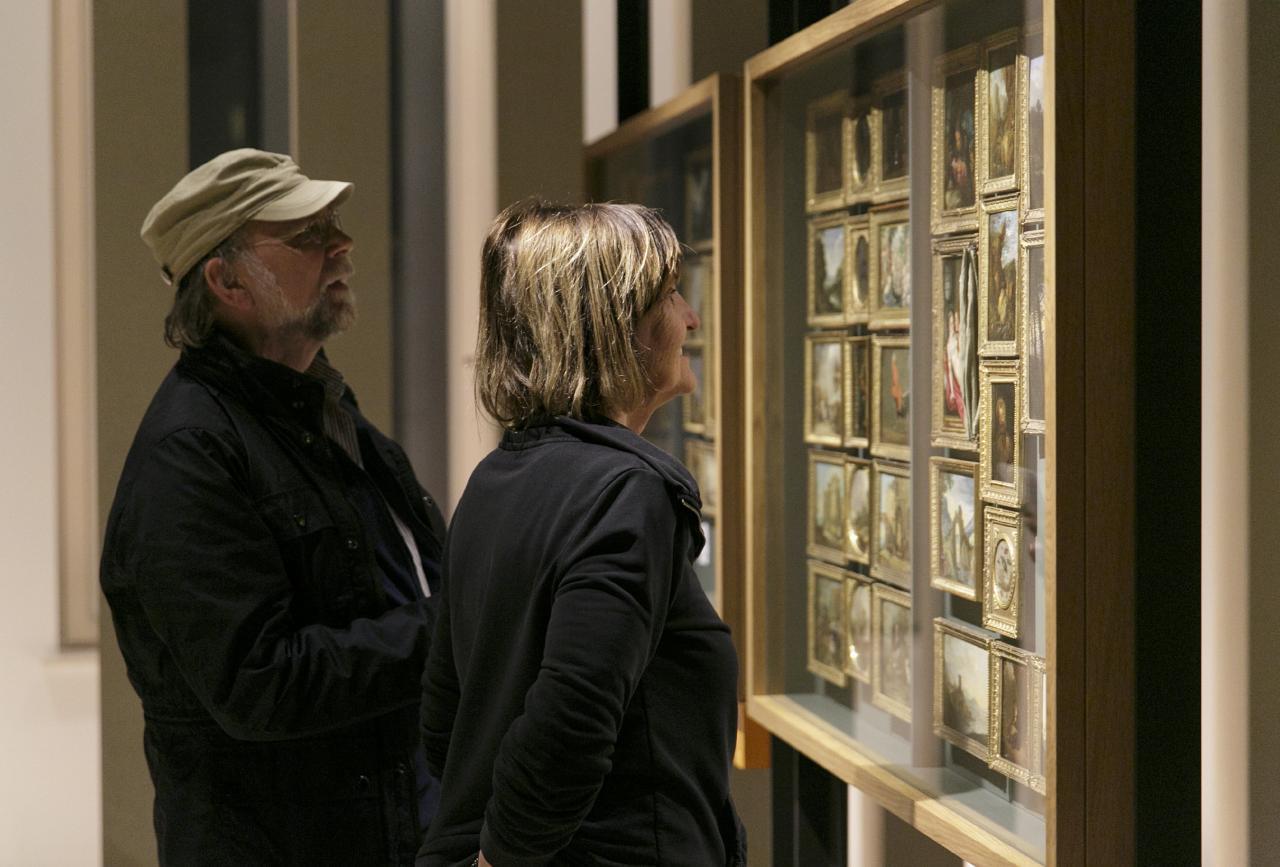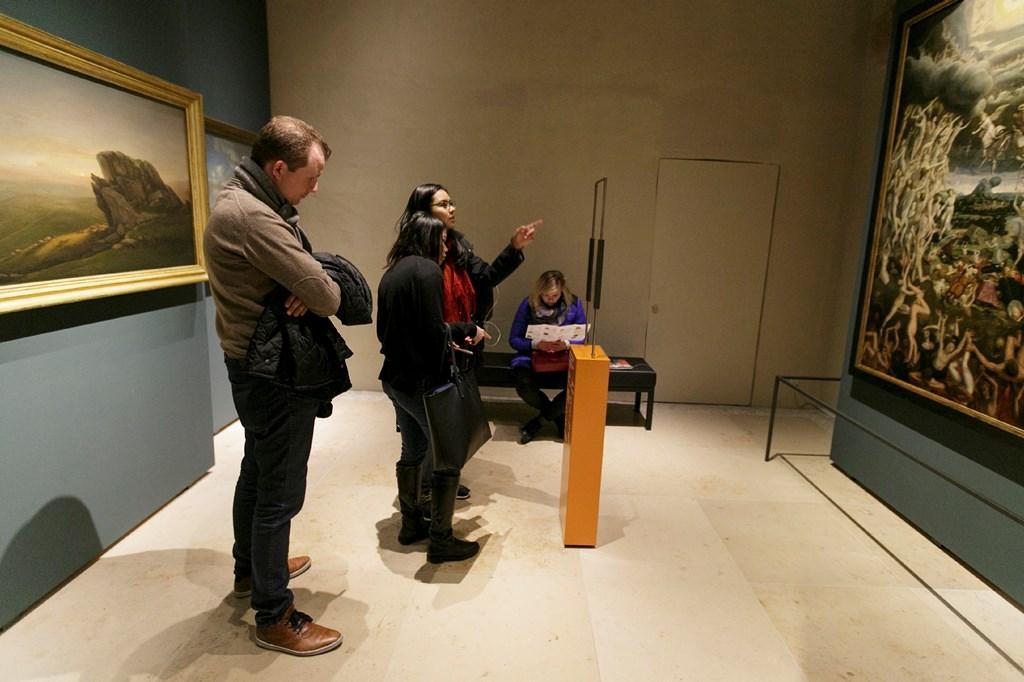Frankfurt collectors and donors
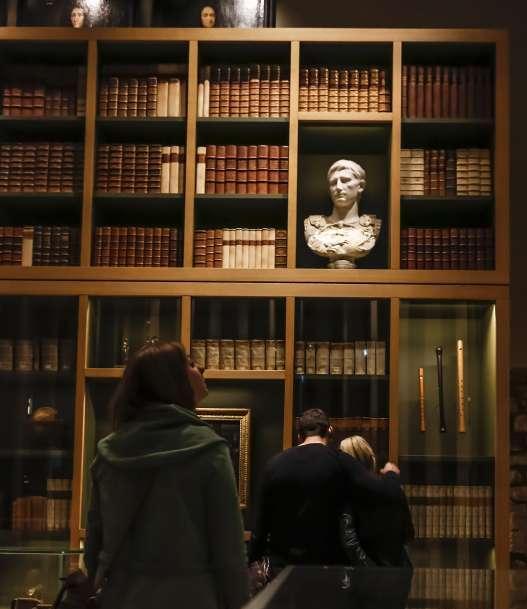



A library full of curiosities
The Frankfurt City Library became open to the public at the end of the 17th century and was given its first full-time librarian in the person of the lawyer and private collector Johann Martin Waldschmidt.
The library collected not only books, but also portraits of deserving citizens, pastors and scholars, busts and coins of Roman emperors, valuable globes and scientific instruments, ancient soil finds from the city's territory, wind instruments from the city's 16th-century chapel music and valuable gifts to the council – such as the "English Monument", a ceremonial goblet in the shape of a column left by English religious refugees in 1557.
The Frankfurt City Library, whose roots go back to the Middle Ages, became the first museum-like collection in Frankfurt open to the public in the 17th century. Its librarian at the time, Waldschmidt, was already able to list paintings, coins, antiquities, natural objects, instruments and sculptures in the catalogues in addition to books. But how did such an extraordinary universal collection come about?
The collection of the city library was diverse from the beginning. There were astronomical and scientific instruments, archaeological finds and excavations from the Frankfurt area, minerals and fossils, ivory, gold and silversmith's work, a painting gallery of learned men and a coin collection. Looking down on it all were portraits of Roman emperors, whose life and rule were intended to be a model for living people. Outstanding objects in the collection are the earth globe by Johannes Schöner, made in 1515, and the celestial globe by the Langgren brothers, made in 1594.
Waldschmidt himself as also a passionate collector and owned a natural history cabinet with shells and minerals as well as a coin collection. It was thanks to him that the City Library became the first public museum collection in Frankfurt. Library visitors had the opportunity to read the books and view the objects twice a week at fixed times.

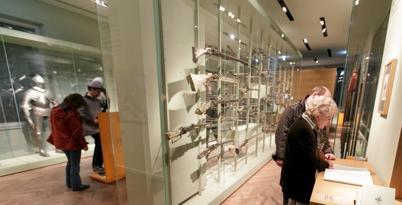


The Fellner Collection
The weapons collection of the Frankfurt citizen Alexander Fellner (1800-1883) has been newly researched for presentation in the permanent exhibition and has undergone extensive restoration.
It is the entire collection that Fellner amassed. He collected sabres and rapiers, pistols and rifles, armour and chain mail, crossbows and shields, helmets and halberds; as well as the relevant specialist literature. The valuable weapons collection was originally to be bequeathed to the Germanic National Museum in Nuremberg. But when a municipal historical museum was also founded in his home town in 1877, Fellner decided to donate the entire collection to the city of Frankfurt. Since then, the pieces have formed the core of the HMF's militaria colection.
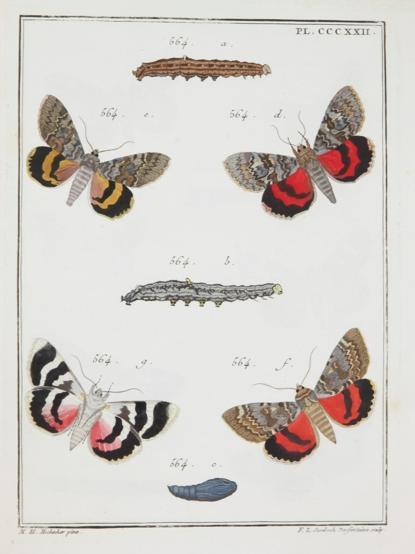
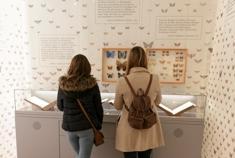


Insects and Frankofurtensia
Butterflies were the passion of the Frankfurt banker Johann Christian Gerning. His collection of 50,000 specimens was an institution among European entomologists in the late 18th century.
In his house in Frankfurt's Schnurgasse, later on Roßmarkt, Gerning also assembled an extensive collection of prints about Frankfurt, which came to the city library in 1805. Johann Christian Gerning owned a comprehensive collection of butterflies (50,000 specimens in 160 boxes), insects and birds, which was repeatedly used as a reference by European entomologists in the 18th century, among them the butterflies owned by Maria Sibylla Merian. Today, the insects belong to the Wiesbaden Museum.

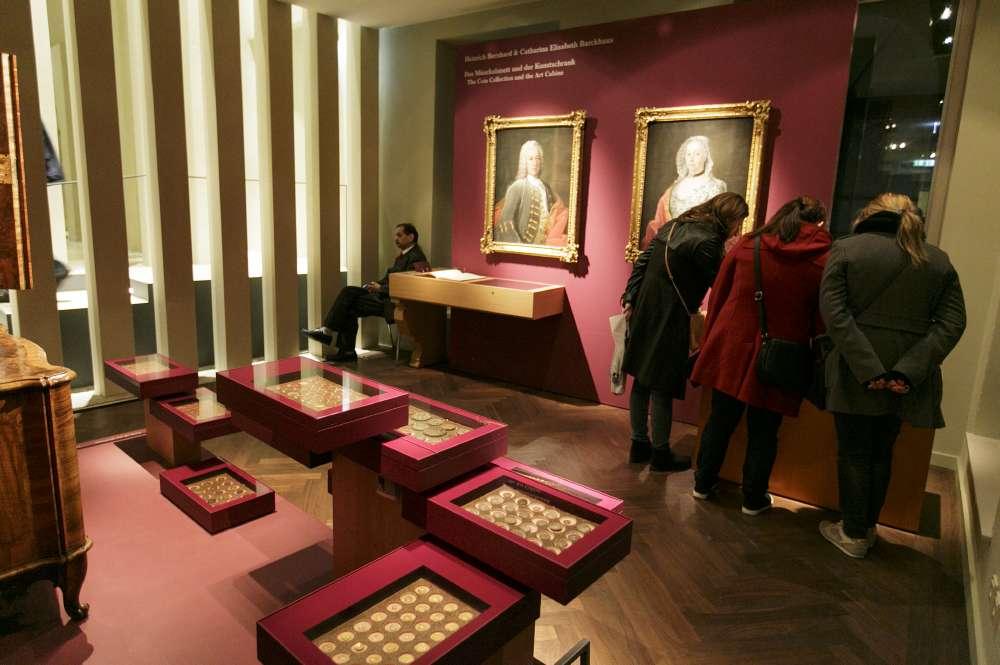


Coin collection and art cabinet
The tour of the Collector's Museum begins with two valuable pieces of collector's furniture: 18th-century citizens collected and displayed their treasures in art caibinets.
The Baroque cabinet of Heinrich Bernhard and Catharina Elisabeth von Barckhaus was donated to the City Library in 1752, along with the turned ivory sculptures, decorated shells and corals, wax paintings and crucifixes. Also on display is the coin cabinet of Anton Philipp Glock (1696-1721) with 3,296 Greek and Roman coins. It was donated to the City Library by his widow (Catharina von Barckhaus) in 1749.
After the death of Catharina Elisabeth von Barckhaus and her second husband, her art cabinet also came to the City Library. It contained valuable objects that had been skilfully worked. It is the only example of this princely form of collection and presentation in the civic city of Frankfurt.
A confectioner as art collector
The collection of Johann Valentin Prehn (1749-1821) could be seen as one of the typical universal collections that many wealthy patricians, bankers, merchants and members of the educated elite in Frankfurt possessed, containing not only works of art but also natural objects, ethnological objects, curiosities and a corresponding library. But Prehn's case is different. His collection has a special feature: Prehn had assembled more than 800 small-format paintings in 32 wooden folding boxes, a painting gallery in miniature, as it were. There has probably never been a comparable collection in Germany; for this reason alone, it is an important testimony to the history of collecting and taste. But Prehn's "Small Cabinet" also contains important paintings; the most famous is the Paradise Garden of an Upper Rhenish Master from around 1410/20 (on permanent loan to the Städel).
In 2021, the HMF dedicated a special exhibition to Prehn's collection.. There is also a research project and an online database on the picture collection. In the Trailer on YouTube you can get first insights into the collection.
Ernst Friedrich Carl Prehn withdrew the Small Cabinet from the collection's auction in 1829, apparently because he wanted it to be preserved in the city as a legacy from his father. The City of Frankfurt accepted the cabinet as a donation in 1839 and transferred it to the City Library at Schöne Aussicht, where it could be viewed from 1842. The Städel administrator Johann David Passavant completely reorganised the paintings in the cabinet according to national schools on twelve large and eight small wall panels and wrote a catalogue of the collection. Together with other paintings in the city's art collection, Prehn's Cabinet was exhibited in the rooms of the Saalhof from 1867 onwards, before it came into the possession of the HMF in 1878, where it was presented in the rooms of the building shared with the City Archive. It was not until 1988 that the museum's then curator of paintings, Kurt Wettengl, undertook a reconstruction based on the auction catalogue of 1829 and rearranged the paintings in 32 boxes.
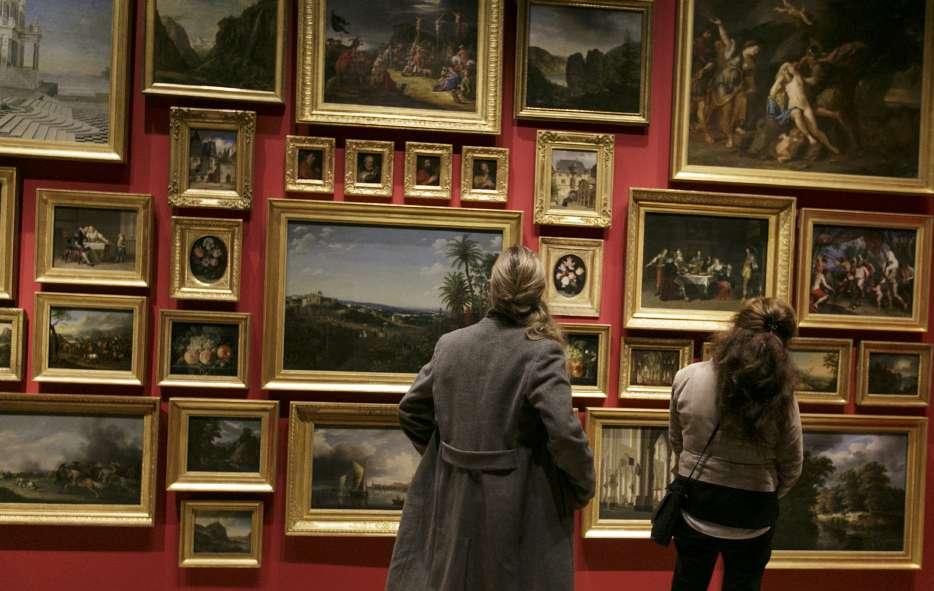
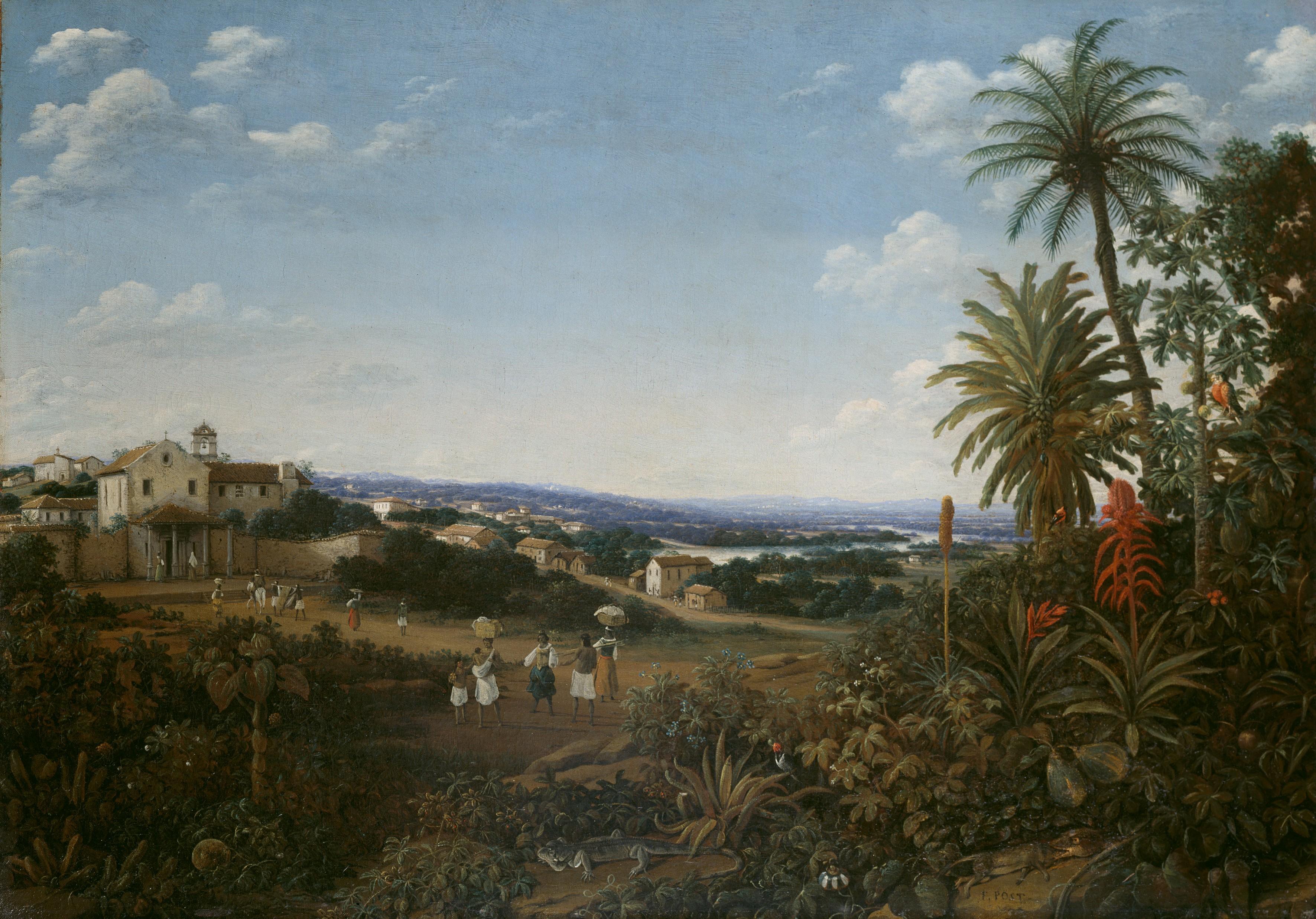


The painting collection of Johann Georg Christian Daems (1774-1856)
Among the paintings are numerous masterpieces, such as the landscape depiction mad by the painter Frans Post (1612-1680) of Brazil. In Daems' collector's room, visitors can see what a "Petersburg hanging" looked like. The contents play just as important a role as the formats of the paintings. The designation of the hanging goes back to the densely hung walls of the Petersburg Hermitage.
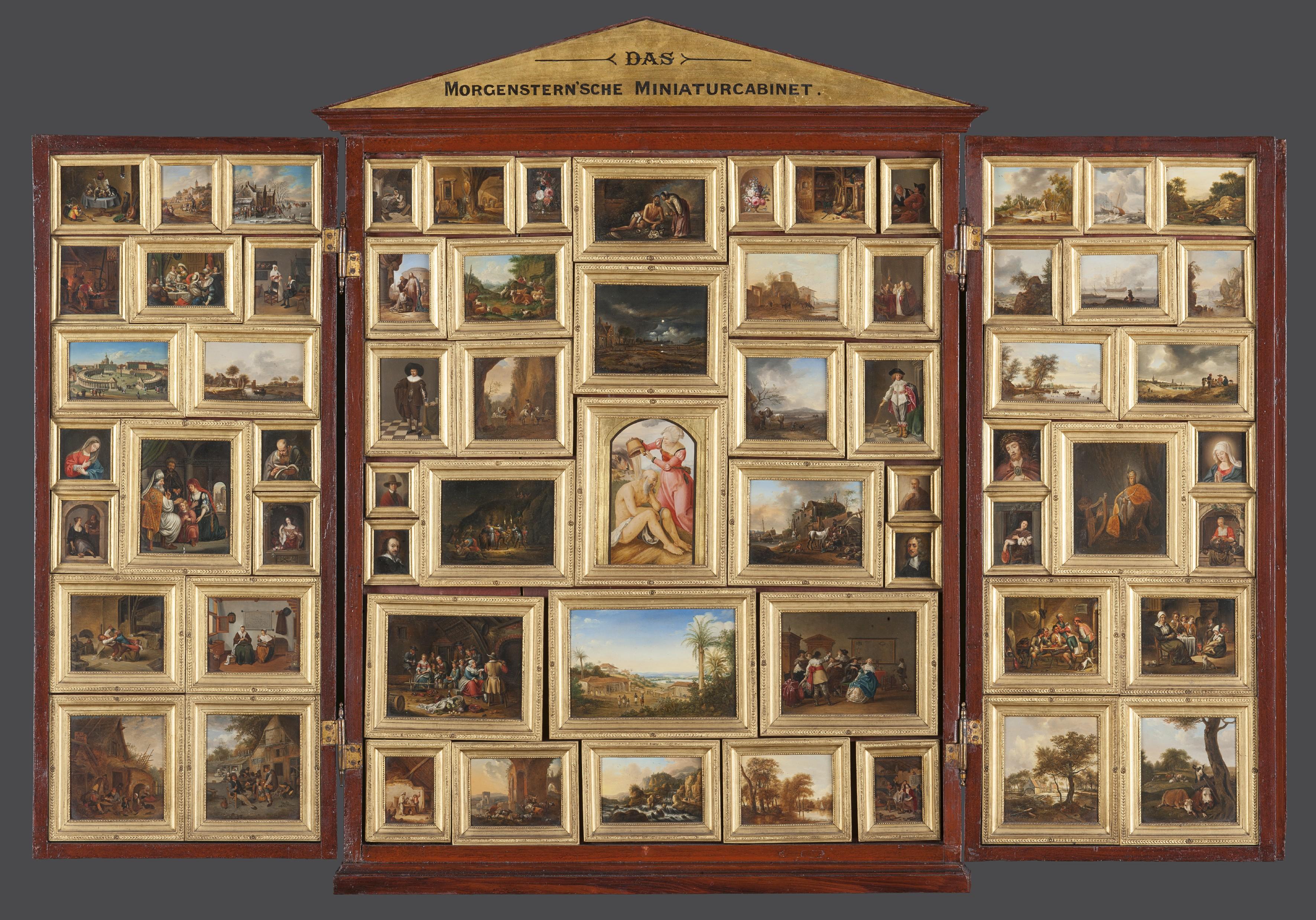
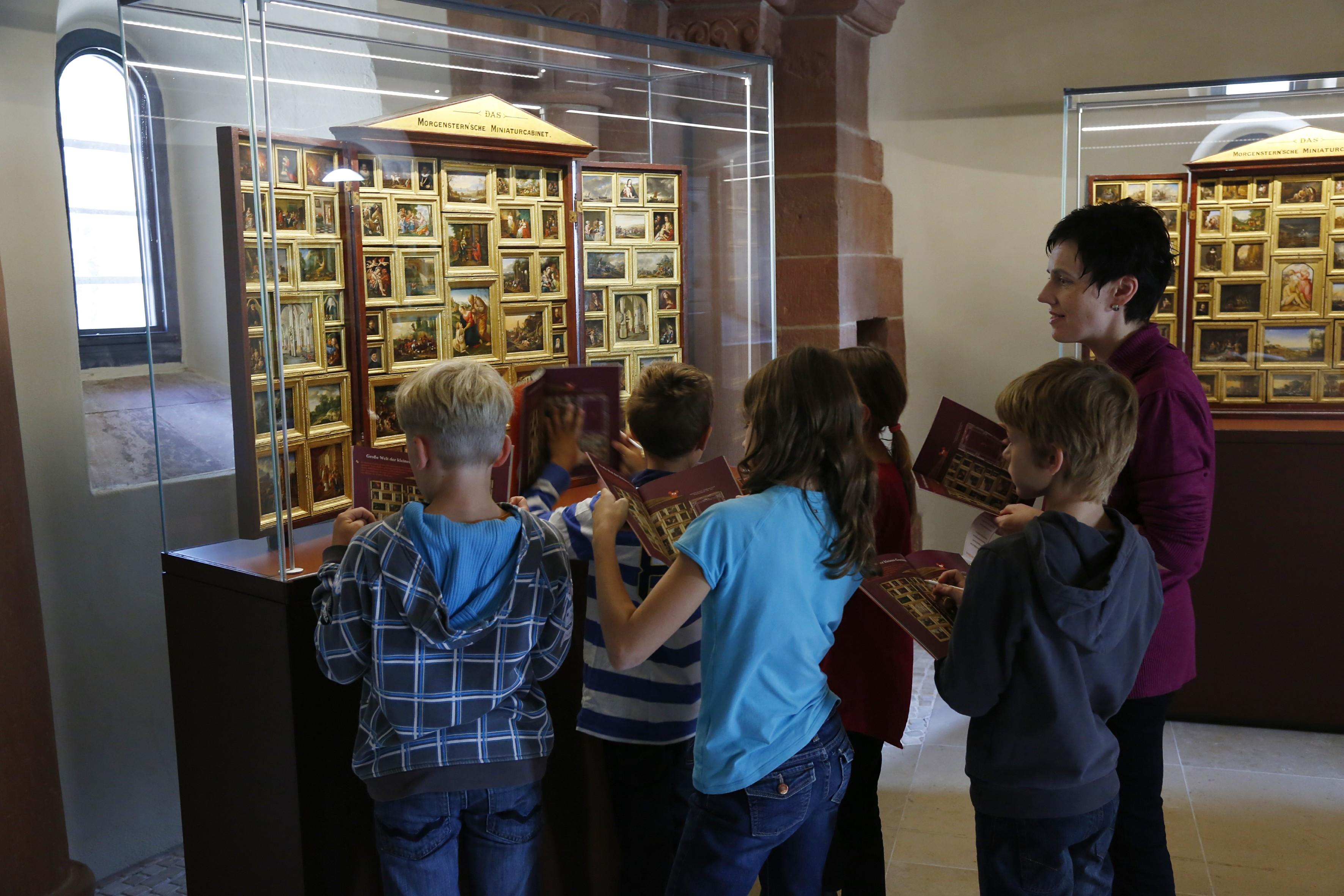


The Miniatures Cabinet
Many artists collect works of all kinds – whether out of pure passion, as an expression of admiration for other artists, as an aesthetic manifesto or for reasons of social prestige.
Thus, the painters Johann Ludwig Ernst Morgenstern (1738-1819), his son Johann Friedrich Morgenstern (1777-1844) and his grandson Carl Morgenstern (1811-1893) also possessed an extensive art collection. This included a very special attraction: "The Morgenstern Miniature Cabinet". This is what it says on the gables of three cabinets that belonged to the Morgenstern family of artists. This painting gallery en miniature, created between 1798 and 1843, is an extraordinary testimony to the history of painting and restoration and is now on display in the altar room of the Staufer Tower in the Collector's Museum.
Carl Morgenstern (or his mother) sold the miniature cabinet in 1857 to the Frankfurt art dealer Anton Baer for 1,800 florins, presumably as a result of financial difficulties. The Kronberg art dealer Uwe Opper succeeded in tracking down the cabinets in England, acquiring them from two different owners in 1979/80 and bringing them back to Frankfurt. The middle cabinet came into the possession of the banking house Gebrüder Bethmann, which made it available to the Goethe Museum on permanent loan. The two outer cabinets were purchased by the City of Frankfurt for the HMF.
The Morgenstern Family of Painters
Johann Ludwig Ernst Morgenstern (1738-1819) worked in Frankfurt as a painter, copyist and restorer, as an art agent and dealer. After his apprenticeship and years of travelling, he finally settled in Frankfurt in 1772. He became a citizen of Frankfurt in 1776, delivered his masterpiece to the town hall and married Anna Maria Alleinz in the same year.
Morgenstern's independent oeuvre includes battle paintings inspired by Rugendas and Wouwerman, some city vedute and prison interiors, and mainly Dutch-influenced church interiors, in which he specialised. Johann Friedrich Morgenstern (1777-1819) was to follow in his father's footsteps both as an artist and as a restorer, and was also to become an appraiser and compiler of auction catalogues. His work includes a number of landscapes from the surroundings of Frankfurt, but above all vedute and views of buildings in his father's city. His grandson Carl Morgenstern (1811-1893), who was also born in Frankfurt, realised the dream of many German painters and visited Italy from 1834 to 1837 to study the art of the ancients. He established himself in Frankfurt as a landcape painter, but was hardly active as restorer.
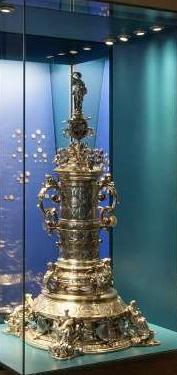
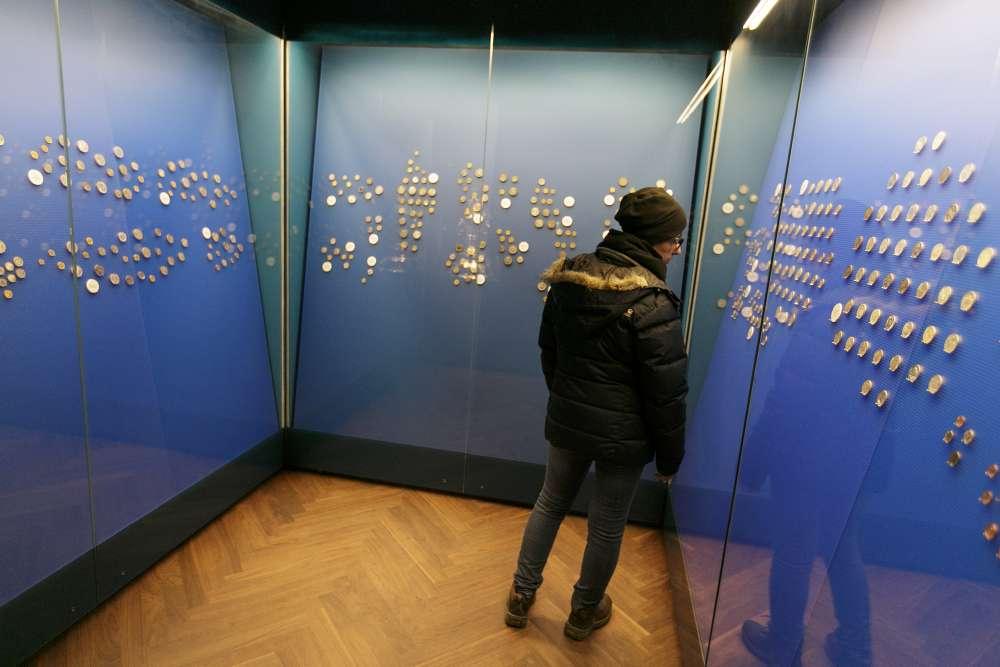


Liquid gold
Under the direction of Friedrich Ernst Roessler (1813-1883), the new Frankfurt Mint was opened in 1840. The resulting DEGUSSA subsequently built up a complete German coin collection. The collection came into permanent loan to the HMF in 2003 and can be seen in the Frankfurt Collector's Museum.
After a minting treaty was signed by six southern German states in 1837, Frankfurt also planned to mint new money. A new mint building had to be built. This was done under the supervision of Friedrich Ernst Roessler, son of the Grand Ducal Hessian Mint Councillor Hector Roessler. The minting of new guilders and kreuzers began in 1840. After the Vienna Mint Treaty of 1857, "Vereinstaler" coins were also minted in Frankfurt.
With the founding of the German Empire in 1871, a new currency was introduced, the mark at 100 pfennigs. The task of the refinery was to melt down old coins and produce ingots and blanks for the minting of new coins. This expansion of the business gave rise to what was later called DEGUSSA as a joint-stock company in 1873. All Frankfurt coins and the gold and silver coins of the German Empire consisted of material that had passed through DEGUSSA's smelter. The raw metal was first cast into ingots and processed into Schrötlings – the unminted coin plates. The final minting took place in Frankfurt (until 1879) and other mints of the German Empire.
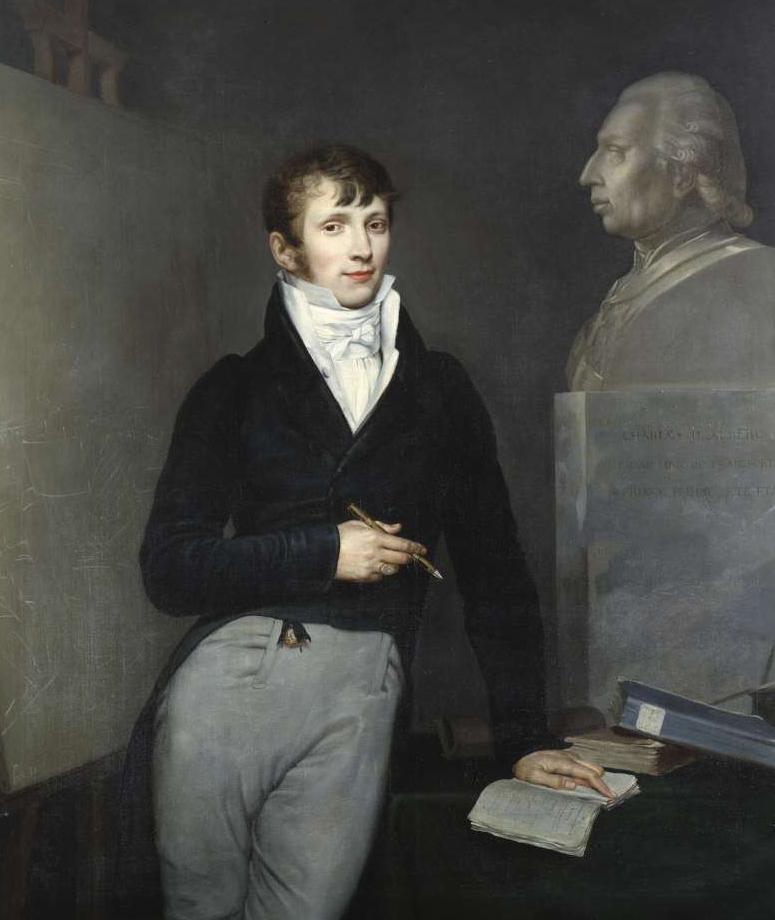



The Collection of Carl Theodor von Dalberg
The 15th and 16th century panel paintings from Frankfurt churches purchased by the Prince-Primate of the Confederation of the Rhine, Carl Theodor von Dalberg, became the foundation stock of the museum society founded by citizens in 1808.
Dalberg did not leave it at that, however, but also donated numerous works by contemporary Frankfurt artists such as Christian Georg Schütz the Younger, Anton Radl, Johann Philipp Ulbricht or Ursula Magdalena Reinheimer. The result was an impressive arc of tension spanning for centuries of painting. Dalberg's reforms in the Grand Duchy of Frankfurt were also aimed at promoting the fine arts. On the initiative of Legation Councillor Nikolaus Vogt and various Frankfurt artists, the "Frankfurt Museum" was founded in 1808, to which Dalberg donated not only the paintings but also numerous works by contemporary Frankfurt artists that he had acquired or commissioned. The events of the newly founded museum aimed at a comprehensive education of the citizens, such as concerts, lectures and art presentations.
The Annen Altar
An outstanding piece of the Dalberg Collection is the Annen Altar, which can be seen in its entirety for the first time in over 200 years. In addition, there are other works that have not been exhibited for a long time, such as the large-format "Last Judgement" from the 1630s attributed to Philipp Uffenbach, Joseph Nikolaus Peroux's "Death of King Günther von Schwarzburg and his Reconciliation with his Opponent Carl IV" from 1808, Christian Georg Schütz the Younger's "View of Brünhildenstein on the Feldberg" from 1810 or Joseph Chabord's "Self-Portrait with the Bust of the Grand Duke of Frankfurt, Carl Dalberg" from 1810.
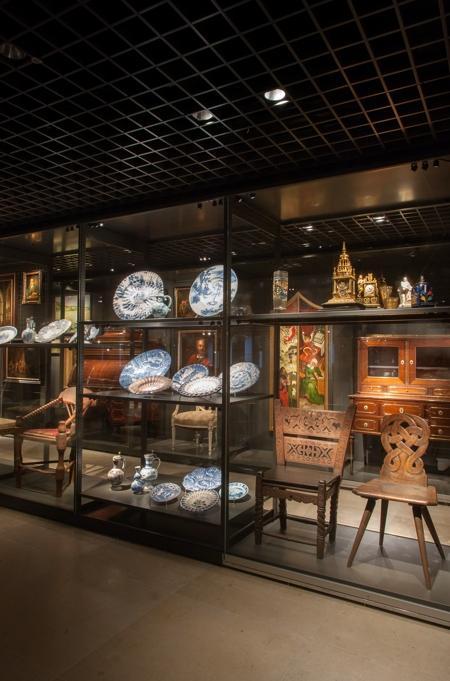
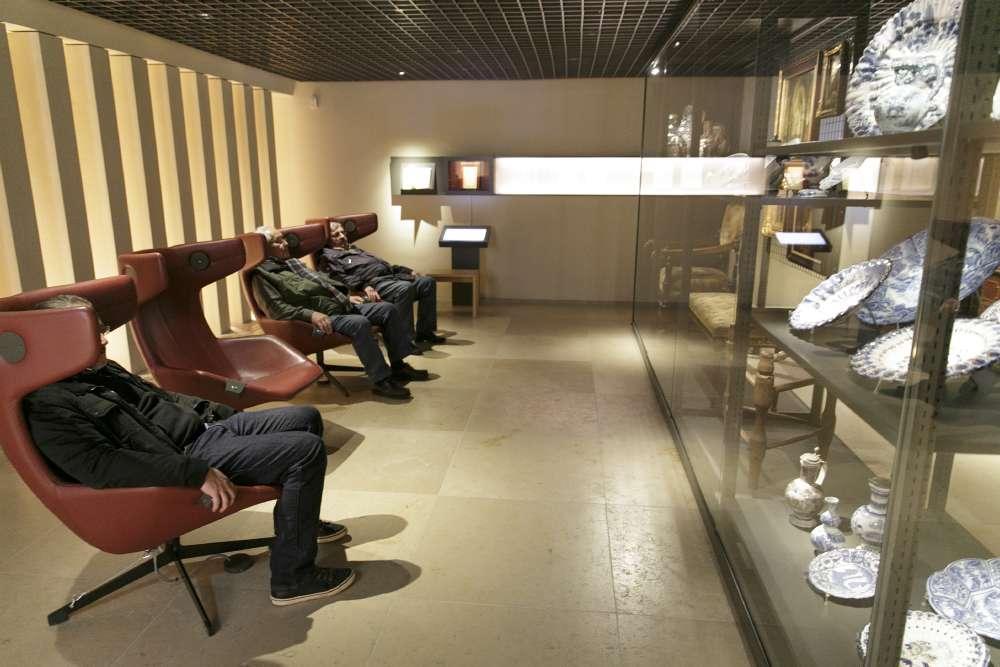


An important private museum
Julius Heyman was a wealthy banker and collector. He amassed an extensive collection of art, furniture, paintings, and sculptures in his private home. In it were rooms in the Gothic, Rhenish Renaissance and Louis XVI styles. The transfer to the city took place in 1925, under the condition that Julius Heyman's home be left unchanged and made accessible to the public as a museum.
Against the wishes of this Jewish citizen, the city closed the museum in 1938, divided the collection among the city museums and offered it for sale in the art trade. The presentation of the objects traced back to Heyman shows a "depot arrangement" in the Collector's museum – the arrangement intended by the collector can no longer be reconstructed due to the wanton dispersion of the objects.

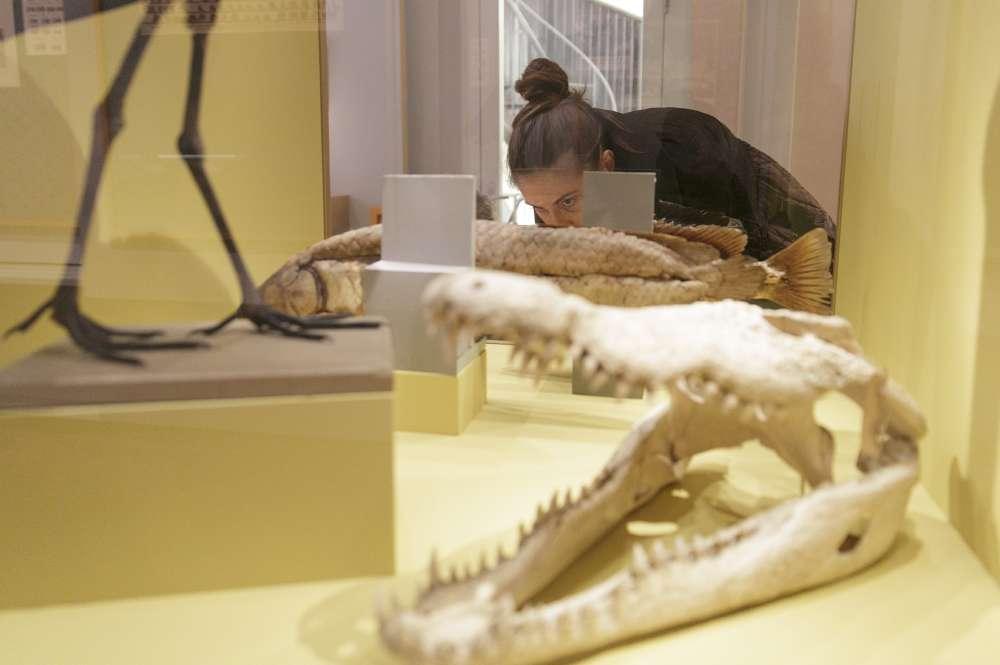


The explorer Eduard Rüppell
Eduard Rüppell (1794-1884) undertook many expeditions. He made numerous discoveries on the African continent and in the Near East. He was an avid collector and brought animals, rock samples and coins to Frankfurt.
The son of a wealthy banker, he studied in France, Switzerland, England and Italy. Through his acquaintance with the Swiss polymath Ludwig Burckhardt, who was enthusiastic about travel, the desire to become an explorer grew in him at an early age. After a trip to Egypt in 1817, he undertook three further journeys at his own expense. Rüppell is credited with significant discoveries in Abyssinia, on the Sinai Peninsula and in areas of the Red Sea as well as in present-day Sudan.
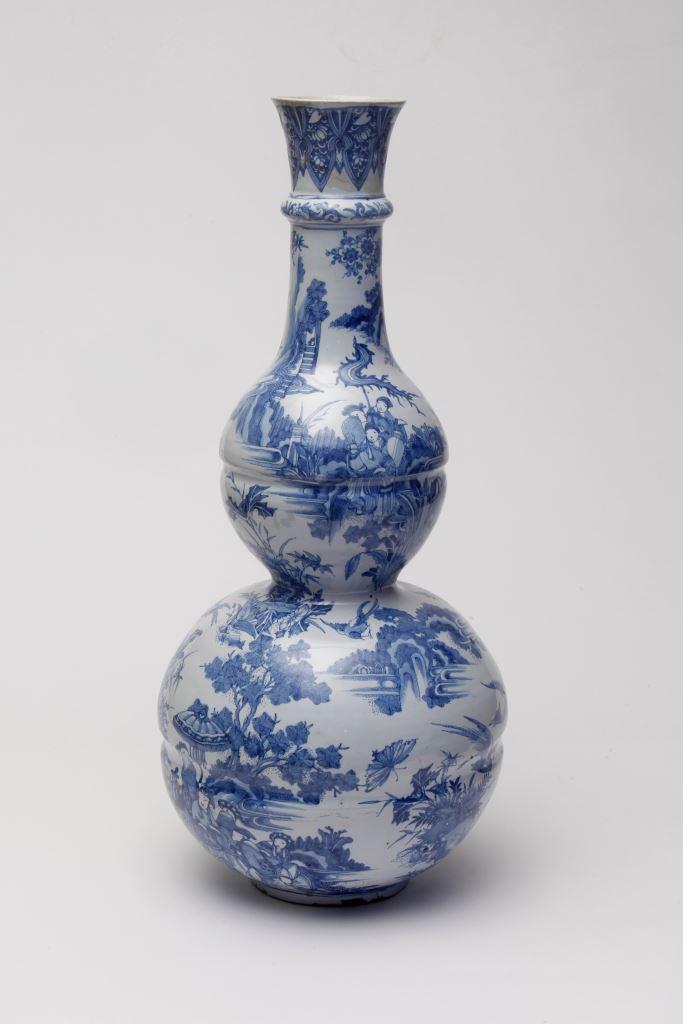



Faiences from Frankfurt
Wilhelm Kratz specialised in 17th and 18th century faience from Frankfurt. The passionate collector had amassed them over decades with great connoisseurship.
He was not alone in this passion: arount 1910, a dense "scene" of faience connoisseurs and interested parties developed in the city. The second large collection of faience from the Frankfurt Faience Manufactory from 1666 to 1772 had been that of the HMF until 1944. Unfortunately, most of it was ultimately better than that of the major Frankfurt museums. After the HMF collection had been destroyed in the war, the city acquired the most comprehensive collection of high-quality faiences, mainly of Frankurt and Hanau provenance, with 800 objects in 1952. Johanne Kratz, widow of the factory owner Wilhelm Kratz from Kronberg, who died in 1945, sold them to the city. The passionate collector had collected this extraordinary material with great expertise over decades.
Click here for the exhibitions in ther Porcellain Museum at Kronberger Haus, and watch a trailer on the Kratz Collection on YouTube.


